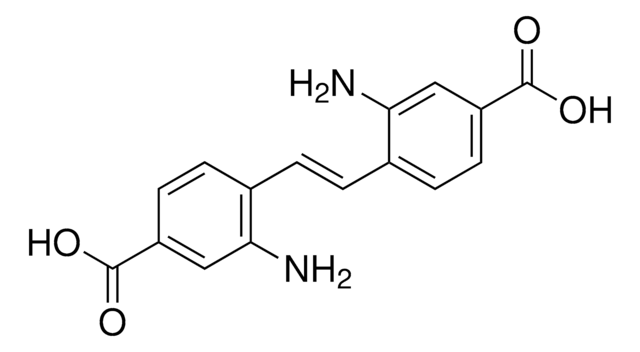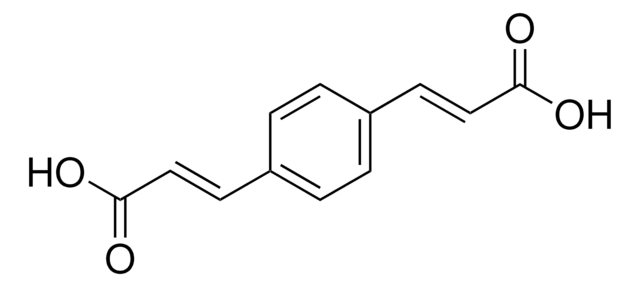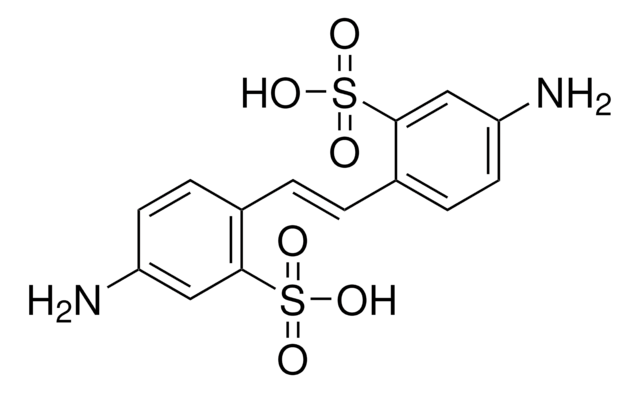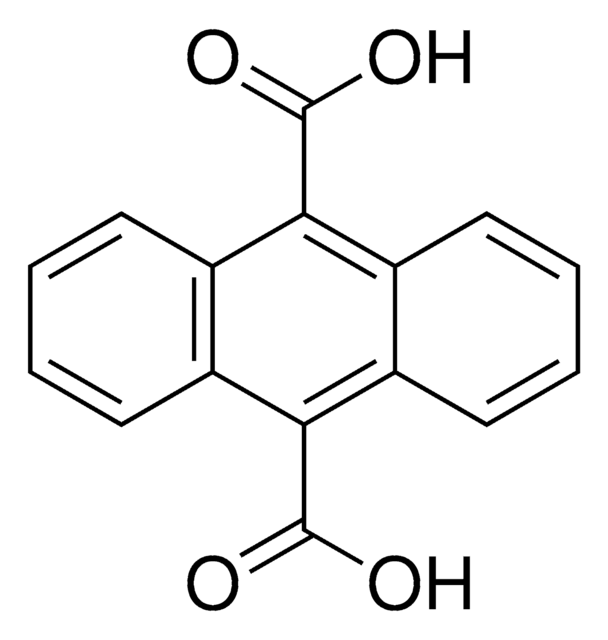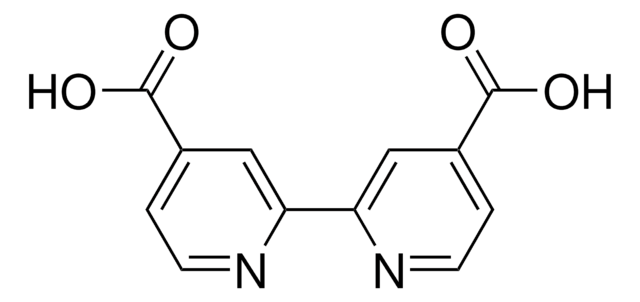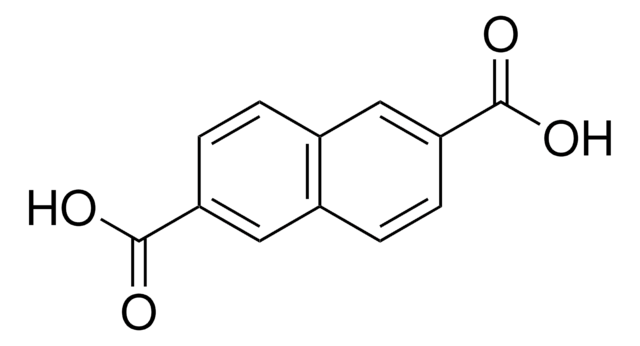759597
4,4′-Stilbenedicarboxylic acid
98%
동의어(들):
4,4′-(1,2-Ethenediyl)bisbenzoic acid, 4,4′-Dicarboxystilbene, Biphenylethene-4,4·-dicarboxylic acid, H2BPEA, H2SDC
로그인조직 및 계약 가격 보기
모든 사진(2)
About This Item
실험식(Hill 표기법):
C16H12O4
CAS Number:
Molecular Weight:
268.26
EC Number:
MDL number:
UNSPSC 코드:
26111700
PubChem Substance ID:
NACRES:
NA.23
추천 제품
분석
98%
형태
powder
환경친화적 대안 제품 특성
Design for Energy Efficiency
Learn more about the Principles of Green Chemistry.
sustainability
Greener Alternative Product
mp
400-420 °C
환경친화적 대안 카테고리
, Enabling
SMILES string
OC(=O)c1ccc(\C=C\c2ccc(cc2)C(O)=O)cc1
InChI
1S/C16H12O4/c17-15(18)13-7-3-11(4-8-13)1-2-12-5-9-14(10-6-12)16(19)20/h1-10H,(H,17,18)(H,19,20)/b2-1+
InChI key
SBBQDUFLZGOASY-OWOJBTEDSA-N
일반 설명
4,4′-Stilbenedicarboxylic acid (SDA) is a luminescent ligand that is useful as an organic linker due to the presence of two carboxylic groups, which form bridges between metallic centers. It has conjugated aromatic rings that facilitate the formation of a rigid linker.
We are committed to bringing you Greener Alternative Products, which adhere to one or more of The 12 Principles of Greener Chemistry. This product has been enhanced for energy efficiency. Find details here.
애플리케이션
SDA can be used in the hydrothermal synthesis of three-dimensional (3D) metal-organic frameworks, which have potential usage in sensing, drug delivery, luminescence, and gas adsorption. It may also be used in energy storage applications such as supercapacitors and batteries.
신호어
Warning
유해 및 위험 성명서
Hazard Classifications
Acute Tox. 4 Oral - Eye Irrit. 2 - Skin Irrit. 2 - STOT SE 3
표적 기관
Respiratory system
Storage Class Code
11 - Combustible Solids
WGK
WGK 3
Flash Point (°F)
Not applicable
Flash Point (°C)
Not applicable
가장 최신 버전 중 하나를 선택하세요:
이미 열람한 고객
Yadagiri Rachuri et al.
Inorganic chemistry, 58(17), 11389-11403 (2019-08-23)
We synthesized two new adenine-based Zn(II)/Cd(II) metal-organic frameworks (MOFs), namely, [Zn2(H2O)(stdb)2(5H-Ade)(9H-Ade)2] n
Marcel Schulz et al.
Chemistry (Weinheim an der Bergstrasse, Germany), 25(59), 13598-13608 (2019-08-10)
In a systematic investigation, the synthesis of metal-organic frameworks (MOFs) with MIL-140 structure was studied. The precursors of this family of MOFs are the same as for the formation of the well-known UiO-type MOFs although the synthesis temperature for MIL-140
An unprecedented stable self-penetrating metal-organic framework with solvent-dependent luminescence properties
Xiao Y, et al.
Inorganic Chemistry Communications, 59(5), 32-35 (2015)
Chengfeng Yu et al.
Dalton transactions (Cambridge, England : 2003), 49(34), 12082-12087 (2020-08-22)
White light-emitting diodes (WLEDs) have aroused great attention due to their potential technological applications. In this work, we present two new Zn(ii) anthracene-linker-driven coordination polymers that exhibit intrinsic white-light emission. The emission covers the whole visible spectrum at room temperature.
Ekaterina A Dolgopolova et al.
Journal of the American Chemical Society, 141(13), 5350-5358 (2019-03-07)
Electronic structure modulation of metal-organic frameworks (MOFs) through the connection of linker "wires" as a function of an external stimulus is reported for the first time. The established correlation between MOF electronic properties and photoisomerization kinetics as well as changes
자사의 과학자팀은 생명 과학, 재료 과학, 화학 합성, 크로마토그래피, 분석 및 기타 많은 영역을 포함한 모든 과학 분야에 경험이 있습니다..
고객지원팀으로 연락바랍니다.
